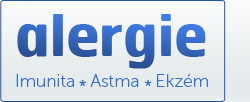In this talk I will go through the evidence base for which therapies have an addition benefit to ICS in children and introduce the ‘paradox’ where the addition of LABAs might seem to give early benefit (reduce day to day symptoms and improve lung function) but in the longer term may be associated with more severe exacerbations.
LABA have gained a position as first line additional therapy to ICS for the treatment of children > 5 years and adults. There have been almost no adequate studies of their role in treating children less than 5 years of age and they do not yet have a licence for treatment in this age group.
Most manufacturers strongly advise that LABA should not be used alone as sole therapy.
Numerous meta-analyses have shown that the addition of either salmeterol or formoterol improves most measures of lung function and day-to-day symptom control in both adults and children.
However, in a review article which included a meta-analysis of studies available at that time Hans Bisgaard first suggested that the evidence for the addition of LABA to ICS in children might be associated with an increase in the all important outcome – increased asthma exacerbations with hospitalizations (Bisgaard H, Ped Pulmonology 2003).
Since then the very large adult Salmeterol Multicentre Asthma Research Trial (SMART) had to be terminated early due to adverse side-effects (including deaths) amongst those entered into the salmeterol treatment limb (Chest 2006; 129: 15-26). The explanation most often given being that many of the side-effects were seen in Afro-Americans who likely were not taking ICS concomitantly. Since then there has been more than 10 systematic reviews (eaching using a subset of the published LABA trials which in the authors view met their selection criteria) looking at the effectiveness and side-effects of LABA yielding conflicting results and conclusions (eg Salpeter, S. R. et. al. Ann Intern Med 2006;144:904-912). Many of these reviews include the children’s studies.
Variable study inclusion factors appear to include:
- LABA added to ICS at same/lower dose
- Some LABA compared with same/higher dose
- Some with no requirement to be on ICS
- Some with no ICS during ‘run-in’ ie ICS withdrawn
- Variably include children
- Some specifically assessed ‘harm’
- Some ‘overwhelmed’ by the ‘SMART’ study
It is also important to note that Pharmaceutical Company sponsored systematic reviews are know to be more likely to conclude that the therapy is effect and to down play side-effects.
A second potential problem with using LABA relates to a ‘waning’ of their treatment effect and this is especially true for exercise induced asthma in children.
LABA undoubtedly give excellent and almost complete attenuation of exercise induced bronchospasm after a single dose and works much more effective than montelukast. However, in one study, after 4 weeks of treatment with LABA the effect had waned and this even occurred in those on ICS. Those treated with montelukast had a maintained benefit (Stelmach et al J Allergy Clinical Immunology 2008).
Potential mechanisms for this paradox where LABA appear to give initial benefit including improved lung function but be associated with increased severe exacerbations in the longer term could include;
- By giving rapid early bronchodilation benefits the uncontrolled airways inflammation is not being adequately addressed.
- A proportion of the population will have the Arg/Arg16 genotype polymorphism of Beta adreno receptor 2 which may predispose them to severer exacerbations if treated with LABA (Palmer et al Thorax 2006); or making child worse.
Conclusions:
1) More long term (> 6months) studies are needed in children to determine if this ‘paradox described above is definitely true.
2) If a child has uncontrolled asthma while on ICS then LABA should be added to either the same or an increased dose of ICS. Otherwise we might be putting the child at an increased risk of an exacerbation.
3) If a child taking LAB2A and SAB2A still experiences problems with exercise or starts having more severe exacerbations – STOP, THINK and consider SWITCHING. Stop the LABA.
Michael D. Shields MD FRCP FRCPCH, Professor of Child Health, Queen’s University Belfast.
